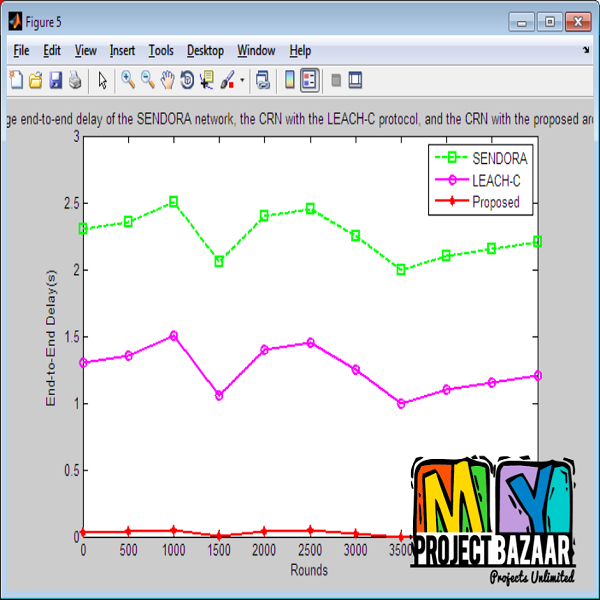
Energy-Efficient Infrastructure Sensor Network for Ad Hoc Cognitive Radio Network
Product Description
Energy-Efficient Infrastructure Sensor Network for Ad Hoc Cognitive Radio Network
Abstract— An energy-efficient network architecture that consists of ad hoc (mobile) cognitive radios (CRs) and infrastructure wireless sensor nodes. The sensor nodes within communications range of each CR are grouped into a cluster, and the clusters of CRs are regularly updated according to the random mobility of the CRs. We reduce the energy consumption and the end-to-end delay of the sensor network by dividing each cluster into disjoint subsets with overlapped sensing coverage of primary user (PU) activity. Respective subset of a CR provides target detection and false alarm probabilities. Substantial energy efficiency is achieved by activating only one subset of the cluster, while putting the rest of the subsets in the cluster into sleep mode. Additional gain in energy efficiency is obtained by two promising propositions: 1) selecting nodes from the active subset for actual sensing and 2) switching the active subset to sleep mode by scheduling. The sensor nodes for actual spectrum sensing are chosen considering their respective time durations for sensing. Even the only active subset is switched to sleep mode for a certain number of time slots, utilizing the history of PU activity. We compare the proposed CR network with existing approaches to demonstrate the network performance in terms of the energy consumption and the end-to-end delay < final year projects >
Including Packages
Our Specialization
Support Service
Statistical Report

satisfied customers
3,589
Freelance projects
983
sales on Site
11,021
developers
175+
















